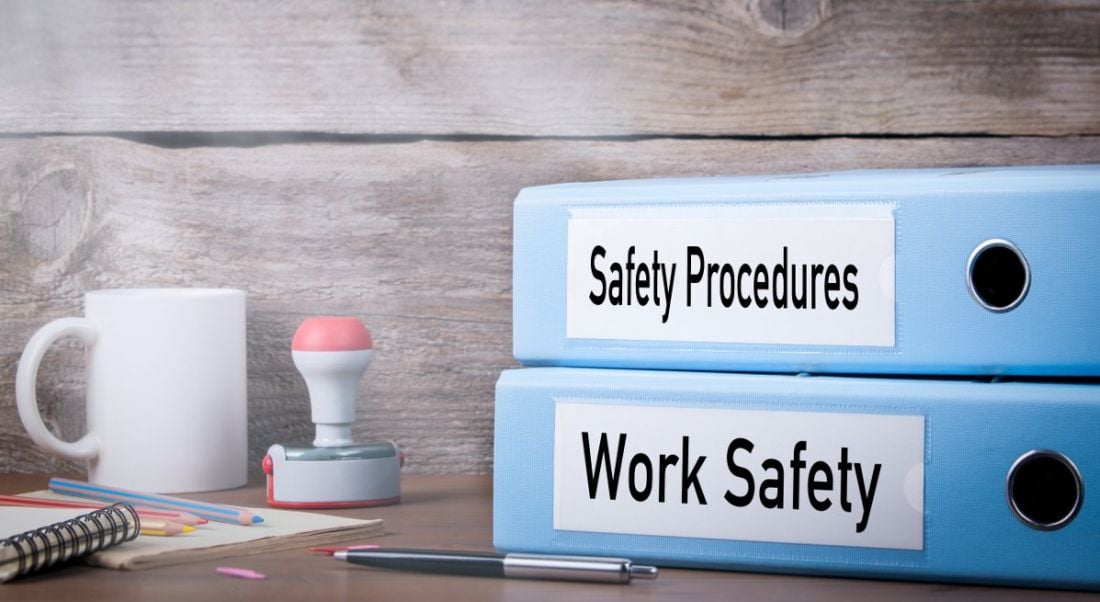We look at how employer health and safety policies could evolve in the future and how will this affect office design.
How we work has probably changed forever as a result of Covid-19. We know that people have already begun to adapt; they are working remotely, training from a distance and socialising with colleagues over video. In the future, some level of that flexibility will likely need to continue.
But what about the workplace itself? How will office health and safety policies change after the coronavirus is behind us? And what measures will business leaders need to consider?
Already, newly built office spaces are taking these changes into account. Irish design and construction company Sonica has just finished working on First Landings, a €3.5m ‘Covid-proofed’ office building in Skerries, Co Dublin. It was designed to operate as a ‘landing space’ for international companies while they look for more permanent bases in Ireland.
Sonica’s founder and managing director, Donnacha Neary, said that while businesses are continuing to work remotely, First Landings has been “overwhelmed” by enquiries.
A ‘Covid-proof’ workplace
Neary’s team took health measures into account when designing First Landings. While it’s big enough to host physically distanced teams, he said, the finer details have also been designed “for the new working environment”.
This includes non-touch facilities throughout the building, from entrances and exits to coffee-making facilities and toilet flushers. People working at First Landings will also be able to book desks and rooms with customised apps that enable “full traceability”, Neary said. Even the furniture aims to keep staff safe and comfortable by being “modular and loose”.
“Reconfiguring existing spaces with technology to create a hybrid work environment that is safe for all is not as daunting as you think,” he added. “A lot of it comes down to good old-fashioned common sense. But when you blend a healthy dose of new tech into the equation, you can quickly create an office that places staff comfort and ease of use at the core of the solution.”
From a construction perspective, Neary believes that the pandemic is going to transform the industry. “In recent months, there’s been an increase in clients considering infection control as it pertains to people congregating, building wellbeing and connection for their space.
“The likely reality is that we will eventually return to a collective environment, as we are social by nature. Offices will always be the epicentre of business; they support and drive the culture of an organisation. But what that looks like has now changed beyond anything previously imagined.”
People will need to play their part
Of course, health and safety measures will only work if people adhere to them. At UK software firm Epro, employees have already been made aware of the gravity of sticking to policies as they return to the office, according to Sharon Allsop, an executive assistant at the company.
“Coming to the office is a privilege at the moment, not a right,” she said. “If someone at Epro didn’t follow the rules, either coming in with symptoms or not washing their hands and distancing within the office, we’d have to revoke that privilege.
“We’ve all got to do what we can to keep each other safe, so that in the long-term we can all return to the office as and when we want to.”
Allsop echoed Neary’s point that much of preparing workplace health and safety policies comes down to common sense.
At data and analytics business Dun & Bradstreet, management is currently focused on adapting the company’s facilities. Its facilities leader in Ireland, Celine O’Halloran, highlighted the importance of listening to staff in this process.
“We have communicated regularly with our employees, listened to any feedback and encouraged them to share any specific requirements to help us provide a productive working environment,” she said.
As the business develops a return-to-office procedure, employees have been part of the discussions. So far this has included amending contracts with the company’s cleaning and maintenance vendors, feeding back on workstation set-ups and hosting wellbeing webinars.
“Life in the office may be restricted to one-way systems and social distancing for the foreseeable future,” O’Halloran added, “but we are planning to pivot with the times and ensure we are still able to provide a welcoming and fun environment for employees to return to when they are comfortable to do so.”
Acknowledging all aspects of health and safety
Though it’s often described as something separate to physical health, mental health is another important aspect that needs to be considered. Employers are already investing more in worker wellbeing than ever before. But could the workplace be designed around mental as well as physical health in the future?
According to inclusivity consultant and behavioural scientist Dr Pragya Agarwal, physical workspace design can affect our mental wellbeing. This can range from the quality of air and lighting in a space to the colours used to paint its walls. The colour green can enhance our mood, for example, while poor lighting can cause eye strain, headaches and tiredness, all of which can contribute to a low mood.
While policies on handwashing, taking staggered lunches and wearing face coverings have been introduced in recent months, future health and safety policies could cover areas of wellbeing, too.
Many workers are currently missing the camaraderie and socialising that typically takes place in an office. Will this still be able to happen in a building strict on health and safety?
Neary of Sonica proposed that workplaces of the future will be “hybrid cultural bases that provide people with flexibility and maintain collaboration, sociability and a sense of community”. He added that the pandemic has made it clear that working from home doesn’t always outweigh the benefits on offer at a “well-nurtured” workplace.
“[The pandemic] has offered us an opportunity to reimagine the role of the office in a post-Covid world and nurture the benefits that were a by-product of the traditional office,” he said. “If we want to deploy real estate in new ways, to make the office experience better than it was before, the time to do that is now.”




